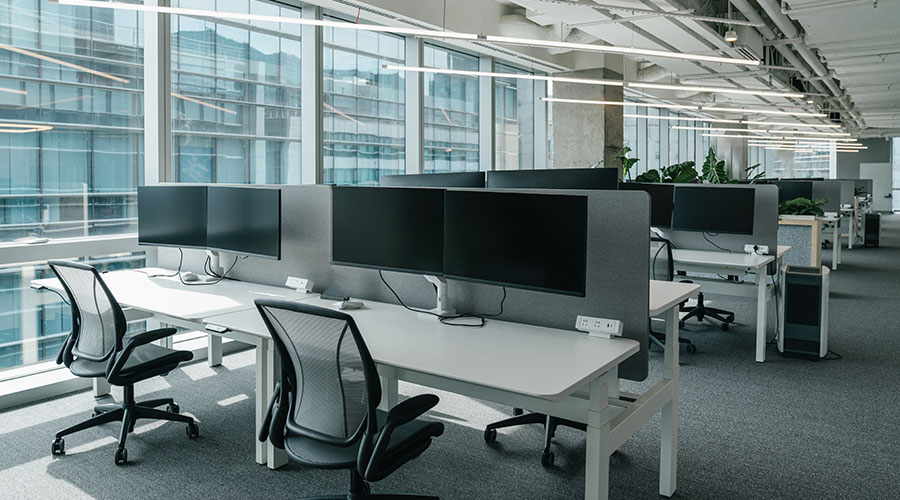With Outdoor Safety and Security Lighting, Cost Should Not Be First Priority
Too many facility managers attempt to meet lighting requirements as inexpensively as possible, says Mike Ross, vice chair of the IESNA security lighting committee and president of GMR. This often results in using low-cost fixtures mounted on building fascia, which throw light outward. "This is done to minimize or avoid the use of pole-mounted fixtures," which are a lot more expensive, he says. "The end result is that glare is produced in an attempt to provide light, and experientially we find that wall-mounted fixtures simply do not have the ability to produce enough light, measured horizontally, based on lighting standards."
IESNA promulgates standards for lighting in a series of publications. The anchor publication is The Lighting Handbook, 10th edition, with additional guidelines published for exterior environments (RP 33), parking facilities (RP 20), security lighting (G-1-03), and glare and light trespass (TM 15). "To avoid mistakes one should be designing for those different circumstances according to IES standards," says Donald Monahan, vice president of Walker Parking Consultants. Moreover, lighting levels should be established according to the International Energy Conservation Code, which limits watts per square foot, Monahan explains.
Ross says that it is common for facility managers to wind up with an inaccurate design if they buy fixtures solely based on light output. Regulations for installing certain types of exterior lighting may require that light be measured at a prescribed number of inches above the ground, on a horizontal plane, so it's important to ensure that the fixture can meet those requirements.
Similarly, facility managers can get into trouble when they hire contractors without practical knowledge of how lighting fixtures respond in specific environments. Each lighting manufacturer must provide photometrics (measurement of the luminous intensity of light) for its products and how they relate to IESNA guidelines (for example, a specified average of foot-candles is required within a roadway or a sidewalk). The contractor may look at product information for a lighting fixture and assume it will work, but he or she doesn't realize that the measures are calculated at grade (instead of 36 inches above the ground) in a laboratory environment.
"A lot of what has been put out has not been field-verified," says Ross. "It's not a quality issue. It's a practical application issue." When cost is the biggest driver, facility managers may agree to cheap solutions that result in glare and uneven light. What is worse, they will not be aware of the problem unless they conduct inspections to verify lighting levels, or until an assault or robbery occurs and a customer files a lawsuit.
The level of technical expertise needed for an optimal design requires the services of an experienced lighting designer, according to both Monahan and Ross. Legal liability can result if an accident happens out of doors and on a facility's property. "Owners are at risk if they don't meet standards," Monahan says, "[but] they have a defensible position if they are meeting industry standards and the lights are being maintained." Monahan conducted a study based on insurance claims of a national parking operator and found that 75 percent were related to "trip and fall" and "slip and fall."
Facility managers should consider conducting periodic assessments at night for the quality of lighting and operational status, possibly using a qualified third party. "Are the lights operating or not?" asks Ross. "Are they shutting off intermittently because of ballast problems?" A quality design means light is ambient, ambient across the location, confined to the premises, compartmentalized (within the boundaries of the property), and in compliance with relevant standards, guidelines, and regulations.
Related Topics:















